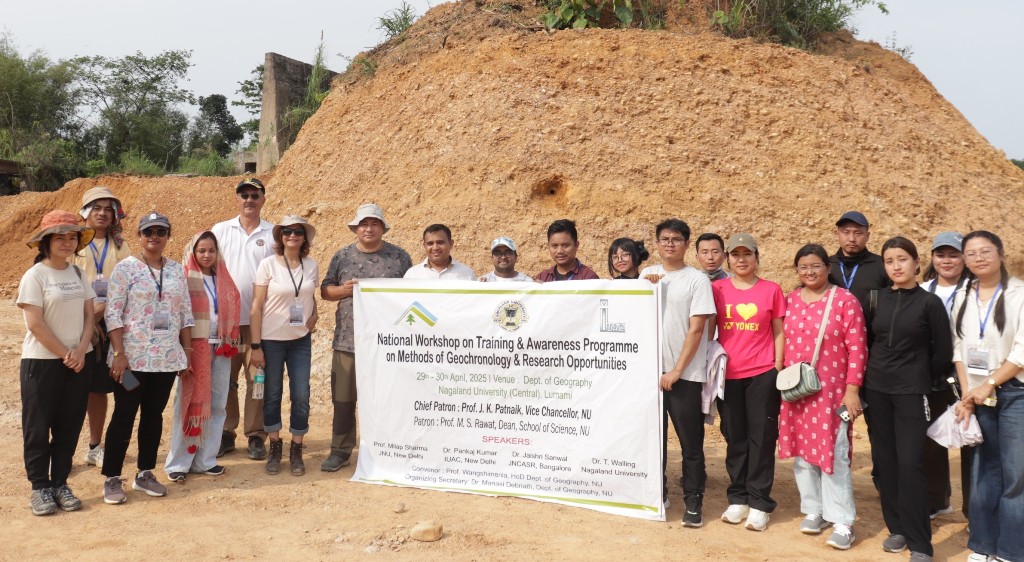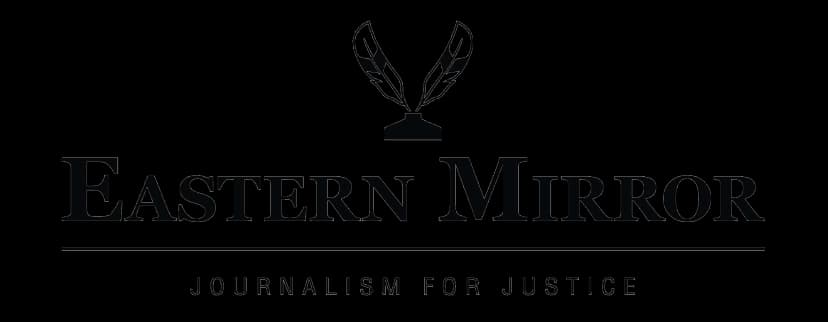SATURDAY, AUGUST 02, 2025
- Home
- Nagaland University organises workshop on understanding geochronology
Nagaland University organises workshop on understanding geochronology
NU in collaboration with the IUAC, New Delhi, successfully organised a national workshop on ‘Methods of geochronology and research opportunities’.
Published on May 1, 2025
By EMN
Share

Resource persons and students of Nagaland University during a field training in Mokokchung district on April 30.
- DIMAPUR — The Geography department of Nagaland University, in collaboration with the Inter-University Accelerator Centre (IUAC), New Delhi, successfully organised a national workshop on ‘Methods of geochronology and research opportunities’ on April 29 and 30 at Lumami campus.
- An update from the university stated that the workshop was conducted with the primary objective to foster a comprehensive understanding of geochronological methods—scientific techniques that help decode earth's surface processes, environmental changes and geological events.
- It mentioned that geochronology serves as a crucial toolkit for reconstructing past climates and informing future research in an era of rapid scientific advancement and growing concerns about climate and environmental change.
Also read: Government solicits nominations for SPG Action Awards 2025
- The programme began with an introductory address by its organising secretary, Dr. Manasi Debnath, followed by welcome speech delivered by Prof. Wangshimenla Jamir, head of department and convenor.
- The resource persons were Prof. Milap C Sharma from JNU, New Delhi; Dr. Pankaj Kumar from IUAC, New Delhi;, Dr. Ambuj Mishra from IUAC, New Delhi; Dr. Jaishree Sanwal from JNCASR, Bangalore; Prof. HJ Syiemlieh from NEHU, Shillong; and Dr. T Walling from Nagaland University, Kohima campus.
- A major highlight of the event was the inauguration of the Glacier and Mountain Research (GLAMOR) Laboratory by Prof. Bendang Ao, vice chancellor in-charge, and Prof. MS Rawat, dean of the School of Sciences.
- The workshop emphasised the significance of advanced geochronological techniques such as optically stimulated luminescence (OSL) dating, AMS ¹⁴C, ¹⁰Be/²⁶Al exposure dating, and zircon geochronology—especially in the context of the northeast Indian region including Nagaland, which hold immense potential for cross-disciplinary research.
- On April 30, a field training was conducted in Mokokchung district, where participants explored the tertiary sediments—the final stages of Himalayan orogeny following the collision of the Indian and Eurasian plates.
- It stated that the participants studied fault structures, sedimentary features and evidence of the changes in river courses due to the active tectonics in this region. It added that the local sandstone and shales offered insight into ancient Tethyan marine conditions that contributed to the formation of present-day Nagaland.
- Report stated that the workshop underscored the urgent need for extensive geochronological research to understand regional landform evolution and support sustainable development planning.

